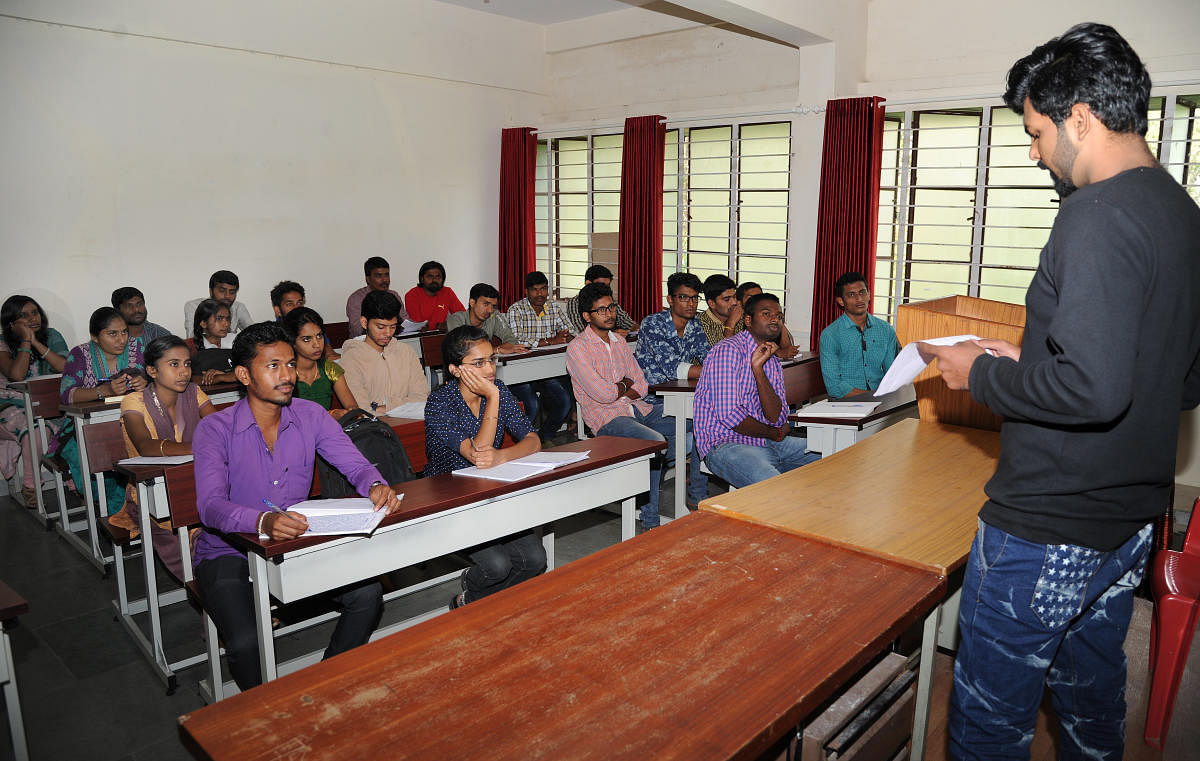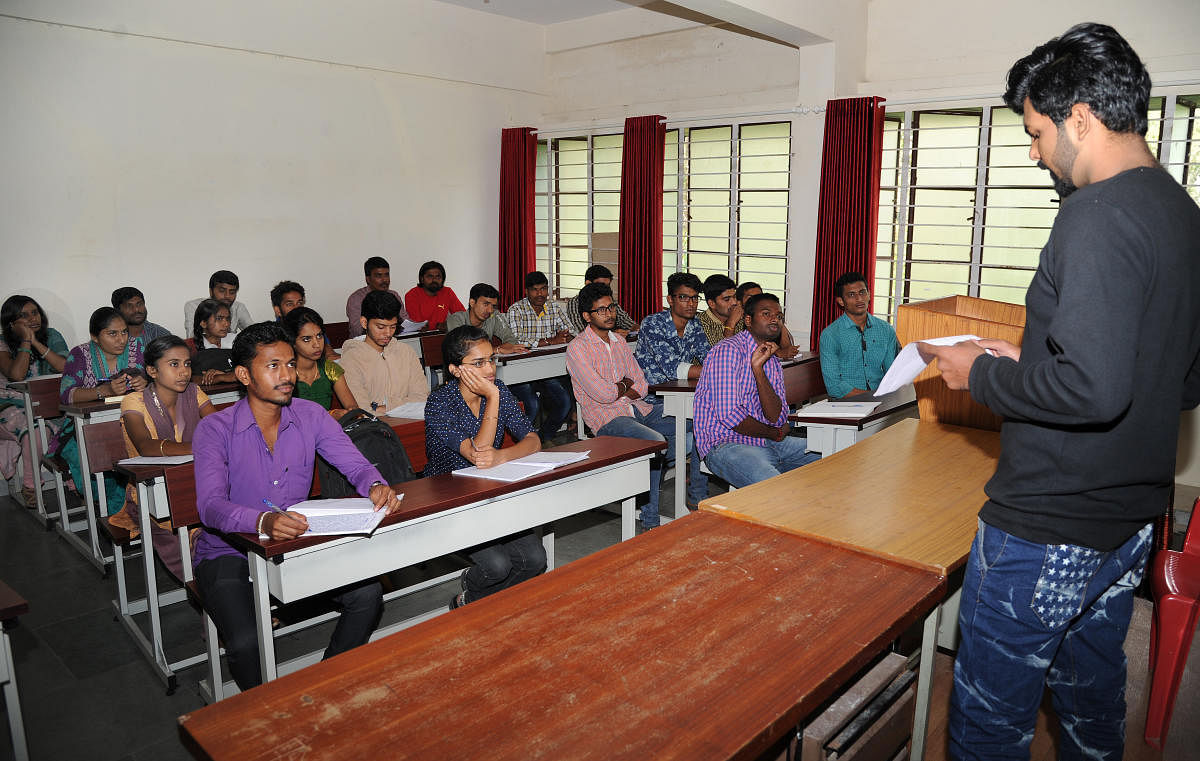

How strict should universities be about their attendance policy? This is a topic of raging debates in faculty meetings at our institute, and presumably in all other. On the one hand, is the view that attending lectures should be mandatory. On the other hand, there’s this view that attending lectures should be made entirely voluntary. Most teachers hold views somewhere in between these two extremes. Let us try to develop some insights into the various aspects of this complex issue.
Students battle with a curriculum that keeps them always on their toes: examinations, assignments, projects, placements, extracurriculars — all driven by high competition. Amidst all this, there are anything between 5-8 lectures to attend every day — each almost running into another, throughout the semester. This load is mind-boggling by any standards. It’s perfectly possible to hold one’s attention through an hour-long lecture — once. To hold that same level of attention throughout the day, day after day is not easy.
Further, not all courses interest the students equally. When you see the same content being delivered by some of the world’s top instructors online through online courses often available at affordable prices, you would but struggle to see any value in attending a lecture which is but a pale shadow of that online one.
Teacher’s perspective
From the teacher’s perspective, the dwindling attendance is another re-affirmation that the ground beneath their feet is slipping. The competition with world-famous instructors rattling out lessons on the web for all to consume often appears like a losing battle. The expectations and judgemental attitude on the part of the students appear way too much. It may very well be the case that the instructor does have something valuable and unique to offer, but before the instructor is able to establish the tone and tempo of a course, he or she finds that the window of opportunity is already past; many students have already lost interest.
It’s undeniable that traditional classroom-based instruction faces stiff competition from online courses. However, it may be too early to write-off traditional classrooms as relics of the past. Nor are traditional universities likely to disappear into thin air anytime soon. Such being the reality, here are a few thoughts for the students to ponder on when walking into a lecture every morning.
Interactivity and dynamism
No online platform — however illustrious the instructor is — comes close to a physical classroom when it comes to physical access to the instructor. If any doubt arises, it is possible to interrupt the instructor in the middle of the lecture or approach him afterwards. Sensing the pulse of the class, the instructor can choose an alternate discourse. When an interesting exchange happens between two participants, it is a live spectacle for the rest of the class, which has a learning value of its own. Indulging with classmates in class activities adds interest to the classroom experience. Although online platforms do try to mimic these experiences, they are still no match.
The human touch
A Facebook friend is not quite the same as a real-life friend. A web-chat is not the same as meeting a friend and chit-chatting over a cup of coffee. Online shopping has its advantages and yet can’t match the experience of visiting a shop and browsing through its collection. A well-conducted lecture in a physical classroom has a similar advantage over its online counterparts.
Learning is no exception to this. Often, the richly multimodal experiences of a real classroom establish a human relationship between the participants. A joke shared, a mistake and its correction, even a disagreement or a reprimand from the instructor — all these add to the human touch and may augment the learning experience.
Hence, students should be active participants in the activities and exchanges taking place in the classroom. This would heighten their experience and engagement levels to where the current online learning platforms cannot reach anytime soon. Preparing a lecture takes enormous time and effort, even if for teaching something familiar. After that, the spectacle of tired, distracted, disinterested faces, fiddling with their phones could be severely demotivating. What I have found effective against this demotivation is to keep in mind that amidst these dazed and distracted eyes, there are always a few which sparkle with curiosity. They make it worth our while to work during the wee hours, to find an interesting example, an engaging story or activity, even that funny joke that will break the spell of seriousness.
But what appears to be the most effective way of holding the interest of students is to reduce the lecture component to some extent. Listening incessantly for hours with nothing else to do is decidedly very boring. Class activities are an effective antidote against the monotony of a lecture. Let them create something, solve a problem, discuss and collaborate with their classmates, even make some noise.
Of course, we wish to live in a world where attendance happens completely by choice. Back in the real world, we are dealing with a bunch of adolescents. They struggle with mental and physical changes, social and relational dynamics and new responsibilities that come with increased autonomy among others. There, preferences aren’t always based on a critical judgement. It’s often driven by hype, peer pressure and simply convenience, laziness etc. In such conditions, dealing with them with romanticised notions of freedom is as dangerous as shackling them down completely is.
The right balance
Finding the right balance is both crucial and elusive. Often, some mild enforcement doesn’t hurt and is even received with gratitude. Only thing is that the rules of the game should be laid out clearly and in advance. Students should be involved in decisions about attendance at a high level.
Attendance policies which are too harsh to be implemented do more damage than good. They often invite malpractices like a proxy. They may lead to widespread resentment among students, negatively affecting their relationship with the instructor and the institute, which is critical for the effectiveness of the learning process. And if the institute fails to enforce its own rules, they become a subject of ridicule amongst the students. The rule itself loses its grip on the students leading to a culture of not taking them seriously — a very damaging prospect in the long run.
Whether used as a means of enforcement or not, the practice of recording attendance is a meaningful exercise. It is a very good indicator of student engagement. If a student is found missing a number of lectures in a row, it could be an indication that the student is facing difficulty in understanding the subject. In such cases, more tutorial effort can be directed to such students. Hence, keeping a tab on the attendance could be an invaluable tool for providing timely help to students.
(The author is assistant professor, International Institute of Information Technology, Bengaluru)